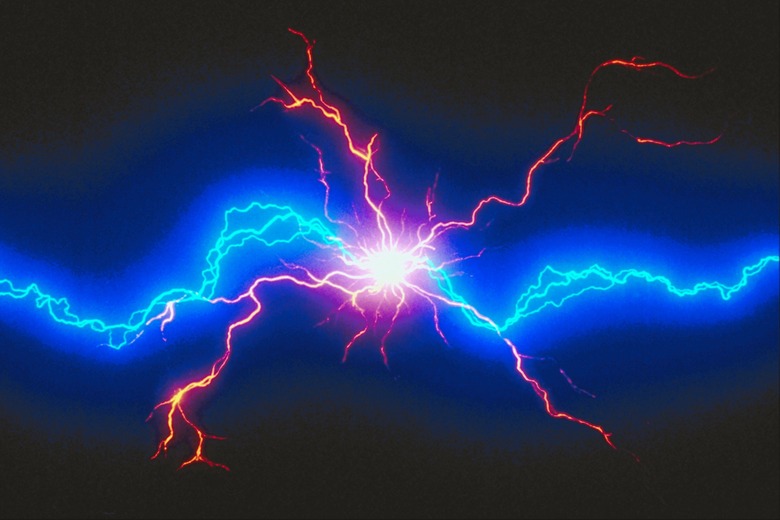How ADP Is Converted To ATP During Chemiosmosis Within The Mitochondria
The ATP (adenosine triphosphate) molecule is used by living organisms as a source of energy. Cells store energy in ATP by adding a phosphate group to ADP (adenosine diphosphate).
Chemiosmosis is the mechanism that allows cells to add the phosphate group, changing ADP to ATP and storing energy in the extra chemical bond. The overall processes of glucose metabolism and cellular respiration constitute the framework within which chemiosmosis can take place and enable the conversion of ADP to ATP.
ATP Definition and How It Works
ATP Definition and How It Works
ATP is a complex organic molecule that can store energy in its phosphate bonds. It works together with ADP to power many of the chemical processes in living cells. When an organic chemical reaction needs energy to get it started, the third phosphate group of the ATP molecule can initiate the reaction by attaching itself to one of the reactants. The energy released can break some of the existing bonds and create new organic substances.
For example, during glucose metabolism, the glucose molecules have to be broken down to extract energy. Cells use ATP energy to break existing glucose bonds and create simpler compounds. Additional ATP molecules use their energy to help produce special enzymes and carbon dioxide.
In some cases, the ATP phosphate group acts as a kind of bridge. It attaches itself to a complex organic molecule and enzymes or hormones attach themselves to the phosphate group. The energy liberated when the ATP phosphate bond is broken can be used to form new chemical bonds and create the organic substances needed by the cell.
Chemiosmosis Takes Place During Cellular Respiration
Chemiosmosis Takes Place During Cellular Respiration
Cellular respiration is the organic process that powers living cells. Nutrients such as glucose are converted into energy that cells can use to carry out their activities. The steps of cellular respiration are as follows:
1. Glucose in the blood diffuses from capillaries into cells. 2. The glucose is split into two pyruvate molecules in the cell cytoplasm. 3. The pyruvate molecules are transported into the cell mitochondria. 4. The citric acid cycle breaks down the pyruvate molecules and produces high-energy molecules NADH and FADH2. 5. The NADH and FADH2 molecules power the mitochondria's electron transport chain. 6. The electron transport chain's chemiosmosis produces ATP through the action of the enzyme ATP synthase.
Most of the cellular respiration steps take place inside the mitochondria of each cell. The mitochondria have a smooth outer membrane and a heavily folded inner membrane. The key reactions take place across the inner membrane, transferring material and ions from the matrix inside the inner membrane into and out of the inter membrane space.
How Chemiosmosis Produces ATP
How Chemiosmosis Produces ATP
The electron transport chain is the final segment in a series of reactions that starts with glucose and ends with ATP, carbon dioxide and water. During the electron transport chain steps, the energy from NADH and FADH2 is used to pump protons across the inner mitochondrial membrane into the intermembrane space. The proton concentration in the space between the inner and outer mitochondrial membranes rises and the imbalance results in an electrochemical gradient across the inner membrane.
Chemiosmosis takes place when a proton motive force causes protons to diffuse across a semi-permeable membrane. In the case of the electron transport chain, the electrochemical gradient across the inner mitochondrial membrane results in a proton motive force on the protons in the intermembrane space. The force acts to move the protons back across the inner membrane, into the interior matrix.
An enzyme called _ATP synthase_ is embedded in the inner mitochondrial membrane. The protons diffuse through the ATP synthase, which uses the energy from the proton motive force to add a phosphate group to ADP molecules available in the matrix inside the inner membrane.
In this way, the ADP molecules inside the mitochondria are converted to ATP at the end of the electron transport chain segment of the cellular respiration process. The ATP molecules can exit the mitochondria and take part in other cell reactions.
Cite This Article
MLA
Markgraf, Bert. "How ADP Is Converted To ATP During Chemiosmosis Within The Mitochondria" sciencing.com, https://www.sciencing.com/adp-converted-atp-during-chemiosmosis-within-mitochondria-11797/. 14 June 2019.
APA
Markgraf, Bert. (2019, June 14). How ADP Is Converted To ATP During Chemiosmosis Within The Mitochondria. sciencing.com. Retrieved from https://www.sciencing.com/adp-converted-atp-during-chemiosmosis-within-mitochondria-11797/
Chicago
Markgraf, Bert. How ADP Is Converted To ATP During Chemiosmosis Within The Mitochondria last modified August 30, 2022. https://www.sciencing.com/adp-converted-atp-during-chemiosmosis-within-mitochondria-11797/
